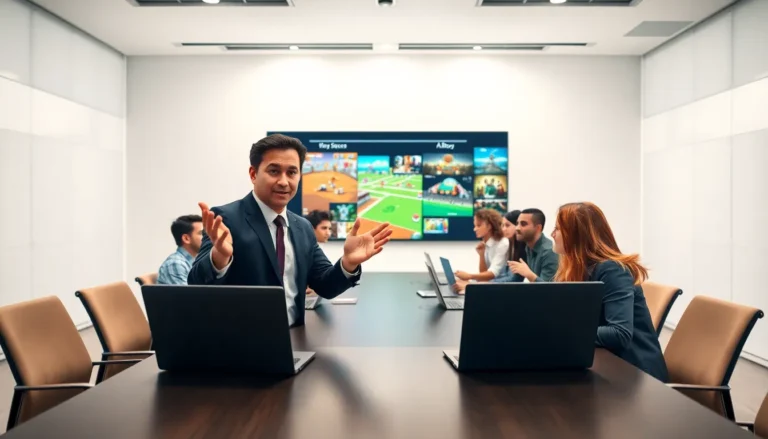Navigating the world of freelancer invoicing can often feel like herding cats, confusing and chaotic at best. Yet, it’s an essential skill for any freelancer who wants to get paid on time (and who doesn’t?). This guide will equip you with everything you need to create clear, professional invoices that even your most forgetful clients won’t skip over. Buckle up: we’re diving into the wild and wonderful world of freelancer invoicing.
Table of Contents
ToggleUnderstanding Freelancer Invoicing

What Is a Freelancer Invoice?
A freelancer invoice is a document that a freelancer sends to a client to request payment for services rendered. It outlines the work completed, the payment due, and any applicable payment terms. Think of it as your formal goodbye to work and a warm welcome to cash.
Importance of Proper Invoicing for Freelancers
Proper invoicing is crucial for freelancers. It not only ensures timely payments but also reflects professionalism. A well-crafted invoice builds trust and can even lead to repeat business. After all, when clients see a clear invoice, they are more likely to wonder what other fantastic services you offer instead of wondering where their money went.
Key Elements of a Freelancer Invoice
Essential Components of an Invoice
Creating an effective invoice is like crafting a delicious recipe: certain ingredients are essential. Here are the must-have components:
- Your contact information: Include your name, address, phone number, and email. This makes you easy to reach and portrays professionalism.
- Client’s information: Include the client’s name and address. It’s like sending a personalized greeting, everyone loves feeling special.
- Invoice number: Each invoice should have a unique identifier. It’s your secret tracking system.
- Date of issuance: This helps both parties keep track of when payment is due.
- Description of services rendered: Clearly state what work was completed to avoid confusion.
- Total amount due: Specify the total amount due clearly, breaking down costs if necessary.
- Payment terms: Don’t skimp on details like the due date and acceptable payment methods: clarity prevents headaches later.
Best Practices for Invoice Design and Formatting
Design matters. An aesthetically pleasing invoice not only captures attention but also adds to your credibility. Consider these best practices:
- Keep it simple: A clutter-free invoice is easier to read.
- Use professional fonts and colors: Choose colors that mirror your brand but stick with legible fonts.
- Include your logo: This adds a personal touch and reinforces your brand identity.
- Export as PDF: This ensures your design won’t change when sent.
Step-by-Step Guide to Creating Invoices
Choosing the Right Tools and Templates
With so many invoicing tools available, selecting the right one can feel like choosing a favorite child. Popular platforms like FreshBooks and QuickBooks offer user-friendly templates that can help simplify the process. Alternatively, Google Docs or Microsoft Word allow for customizable designs.
Tips for Efficient Invoicing Processes
Efficiency is key in any freelancer’s life. To speed up your invoicing processes, try these techniques:
- Set up recurring invoices: If you have ongoing clients, automated invoicing saves time and ensures consistency.
- Keep detailed records: Maintain a log of hours worked and tasks completed to easily reference when creating invoices.
- Create templates: Once you’ve settled on a design, save it as a template for future use. This will become your new best friend.
Common Mistakes and How to Avoid Them
Ensuring Timely Payments from Clients
No one enjoys waiting for payments, especially those who rely on steady cash flow. To ensure timely payments, consider these strategies:
- Send reminders: A friendly nudge can be a gentle reminder that payment is due.
- Be clear about terms: Make sure the due date and payment process are clearly stated in your invoice.
- Follow up: If a payment is overdue, don’t hesitate to reach out. It can be uncomfortable, but it’s necessary.
Dealing with Late Payments Effectively
Late payments? It happens to the best of us. When this situation arises, try not to panic. Instead:
- Stay professional: Maintain a calm demeanor: it’s more likely to elicit a positive response.
- Negotiate: If clients are repeatedly late, discuss solutions that work for both parties, perhaps adjusting payment terms or methods.


